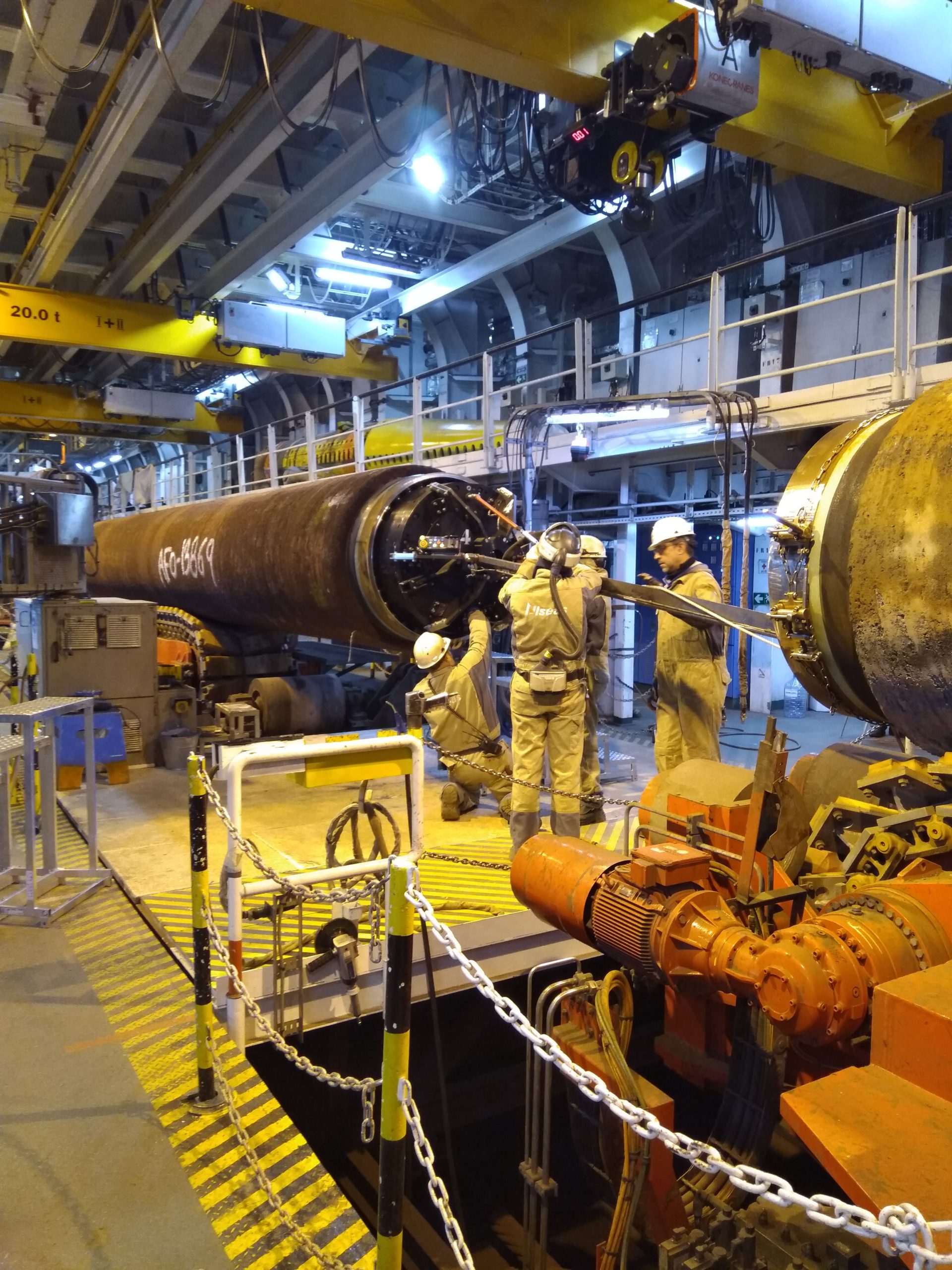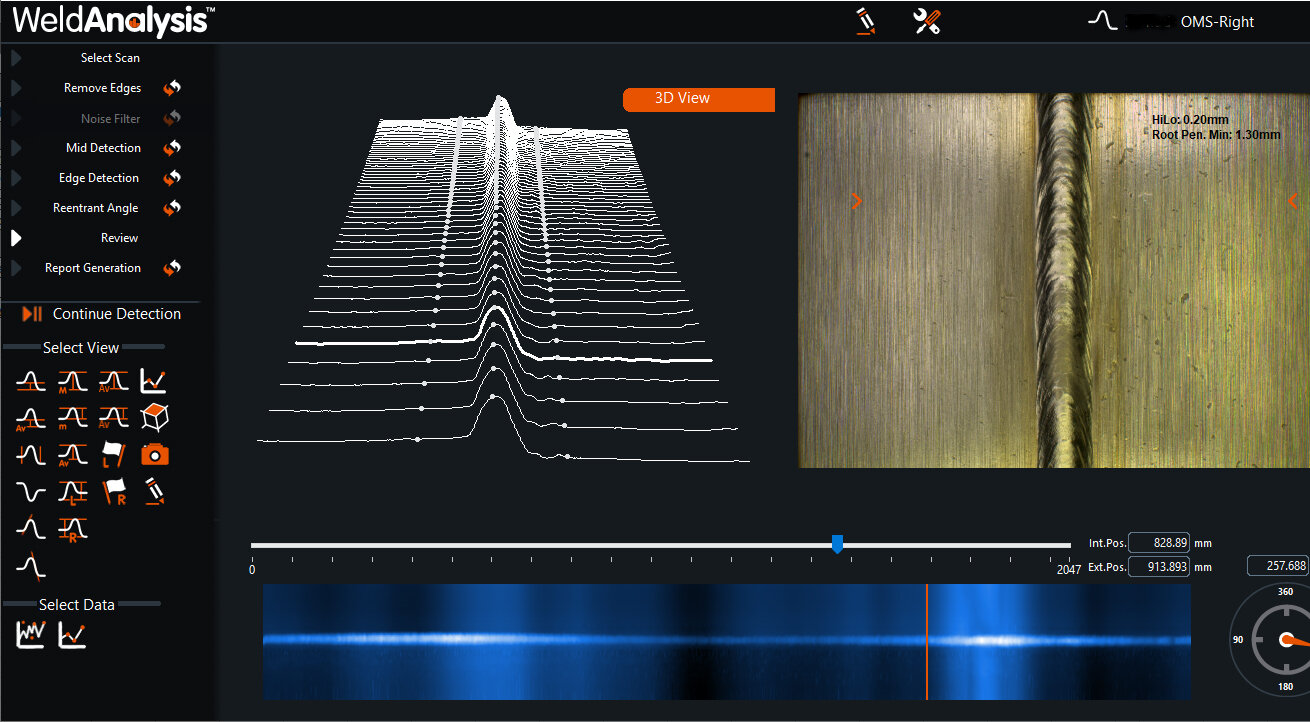Pipeline Welding Inspection: Safeguarding Pipelines with Accuracy and Know-how
Pipeline Welding Inspection: Safeguarding Pipelines with Accuracy and Know-how
Blog Article
Advanced Techniques in Pipe Welding Examination: Technologies and Technologies for Enhanced Precision and Reliability in Weld Analysis
The landscape of pipe welding evaluation is undertaking a significant transformation, driven by advanced strategies that promise to improve both precision and reliability in weld assessments. Advancements such as automated examination systems and advanced imaging technologies are redefining conventional methods, while non-destructive screening techniques make certain material honesty is maintained.

Value of Weld Inspection
Making sure the honesty of pipe welds is critical to the general safety and security and integrity of industrial systems. Strenuous inspection of welds is integral to the lifecycle of pipe infrastructure.
The relevance of weld inspection extends beyond mere conformity with regulatory criteria. It acts as an aggressive measure to identify and correct imperfections, such as incomplete combination, porosity, or fractures, before they rise into serious problems. Efficient examination strategies additionally contribute to the longevity of pipelines, minimizing maintenance prices and improving functional effectiveness.
Additionally, comprehensive weld examinations foster trust amongst stakeholders, including governing bodies, investors, and the neighborhoods offered by these pipelines. By ensuring that all welds fulfill the called for criteria, organizations can mitigate threats and support their reputations. In recap, weld inspection is important not only for operational stability however likewise for the wider ramifications it holds for security and ecological stewardship.
Automated Evaluation Systems
The assimilation of automatic examination systems in pipe welding has reinvented the method to guaranteeing weld high quality and integrity. These systems use sophisticated robotics and expert system to conduct examinations that are not only quicker yet likewise more consistent than conventional approaches. Automated systems can cover considerable lengths of pipes successfully, capturing data that human examiners could forget due to tiredness or environmental conditions.
One of the crucial advantages of automatic examination systems is their capacity to operate in harmful settings, lowering the threat to human inspectors. They utilize different non-destructive testing (NDT) techniques, such as ultrasonic testing and magnetic bit assessment, to analyze weld integrity without endangering the framework. The information collected is refined in real-time, permitting for immediate feedback and prompt corrective actions when issues are identified.
Additionally, automated systems assist in the standardization of examination processes, making certain that each weld is evaluated versus regular standards. This not just boosts the dependability of results but also improves conformity with regulative requirements. As sectors remain to focus on security and functional performance, the role of computerized assessment systems in pipeline welding will most certainly expand, leading the method for more innovative top quality guarantee techniques.
Advanced Imaging Technologies
Regularly employed in modern pipe welding examinations, advanced imaging innovations have actually considerably boosted the capacity to identify and examine weld issues. Methods such as digital radiography, computed tomography, and thermographic imaging supply inspectors with high-resolution pictures that reveal sub-surface flaws and architectural incongruities that may be unnoticeable to the nude eye.
Digital radiography makes use of electronic sensors to catch pictures, permitting prompt testimonial and improved image comparison. This results in much faster assessments and improved precision in determining essential flaws. Calculated tomography, on the various other hand, offers three-dimensional imaging, making it possible check my site for inspectors to picture complex geometries and examine the honesty of welds from multiple angles - Pipeline Welding my response Inspection. This deepness of analysis is indispensable for detecting problems that traditional approaches may overlook.
Thermographic imaging utilizes infrared innovation to find variants in temperature, determining locations of potential weakness or stress and anxiety within the weld. These advanced imaging technologies not just enhance flaw detection rates yet likewise reduce the moment and resources required for pipe inspections. Therefore, they play an essential role in maintaining pipeline safety and security and dependability, making sure conformity with market criteria while reducing functional dangers.
Non-Destructive Examining Approaches
Utilizing different strategies, non-destructive screening (NDT) techniques are important in pipeline welding assessments, permitting the assessment of weld integrity without compromising the product's structural stability. NDT includes a range of techniques, including ultrasonic testing (UT), radiographic testing (RT), magnetic bit screening (MT), and dye penetrant testing (PT) Each technique has distinctive benefits and applications relying on the particular requirements of the evaluation.
Ultrasonic screening uses high-frequency acoustic waves to detect interior defects, supplying exact measurements of weld density and stability. Pipeline Welding Inspection. Radiographic screening utilizes X-rays or gamma rays to produce images of the weld, revealing inner problems that may not be visible on the surface. Magnetic particle testing works for discovering surface and near-surface gaps in ferromagnetic materials, while dye penetrant testing highlights surface area fractures by utilizing a tinted dye
Integrating these NDT methods into pipeline welding assessments boosts the accuracy and reliability of weld analyses, guaranteeing that prospective failings are identified early. As markets demand greater standards for safety and efficiency, the function of NDT in maintaining the stability Extra resources of bonded frameworks proceeds to be crucial in pipe building and upkeep.

Future Fads in Weld Evaluation
As we look to the future of weld assessment, advancements in modern technology are positioned to change the approaches used for assessing pipe integrity. The assimilation of expert system (AI) and equipment understanding in examination procedures is anticipated to boost the precision of defect discovery and predictive maintenance. These modern technologies permit real-time information analysis, making it possible for examiners to recognize prospective concerns prior to they escalate into substantial problems.
Furthermore, the use of drones furnished with advanced imaging systems is acquiring grip. These aerial examinations can cover substantial locations swiftly, capturing high-resolution pictures and data that can be assessed for defects in hard-to-reach places. This not only enhances safety and security yet likewise increases performance in the inspection procedure.
In addition, the advancement of clever sensors embedded in pipeline systems uses the potential for continual surveillance. These sensors can discover modifications in stress, temperature, and resonances, supplying valuable insights right into the wellness of the welds with time.

Conclusion
Finally, the combination of advanced techniques in pipe welding assessment substantially enhances the accuracy and integrity of weld evaluations. Advancements such as automated examination systems, progressed imaging innovations, and non-destructive testing methods play a critical function in enhancing problem detection rates and promoting aggressive upkeep techniques. As these innovations continue to evolve, they will further ensure the safety and security and effectiveness of pipeline systems, ultimately adding to the honesty of crucial facilities.

Report this page